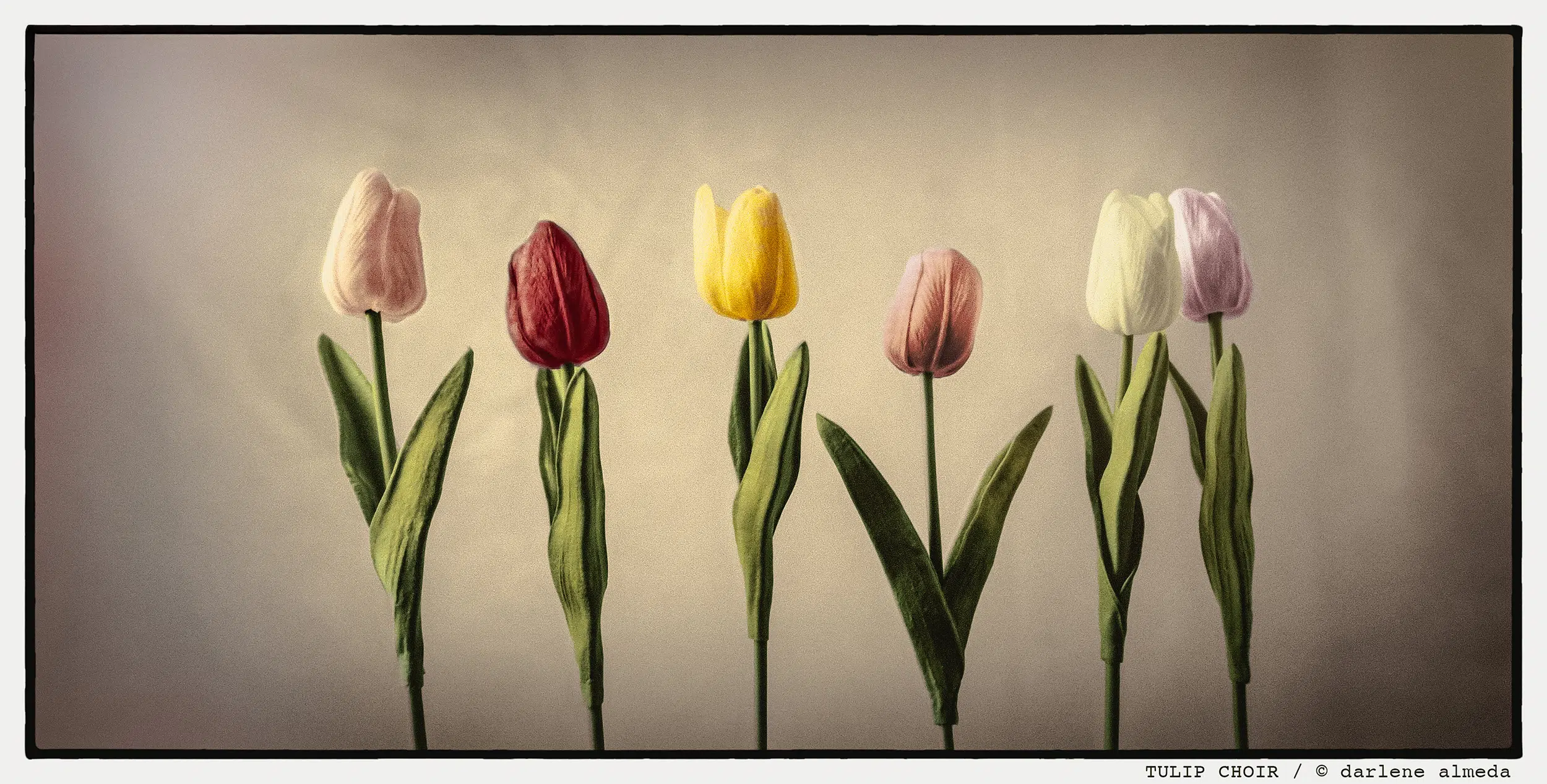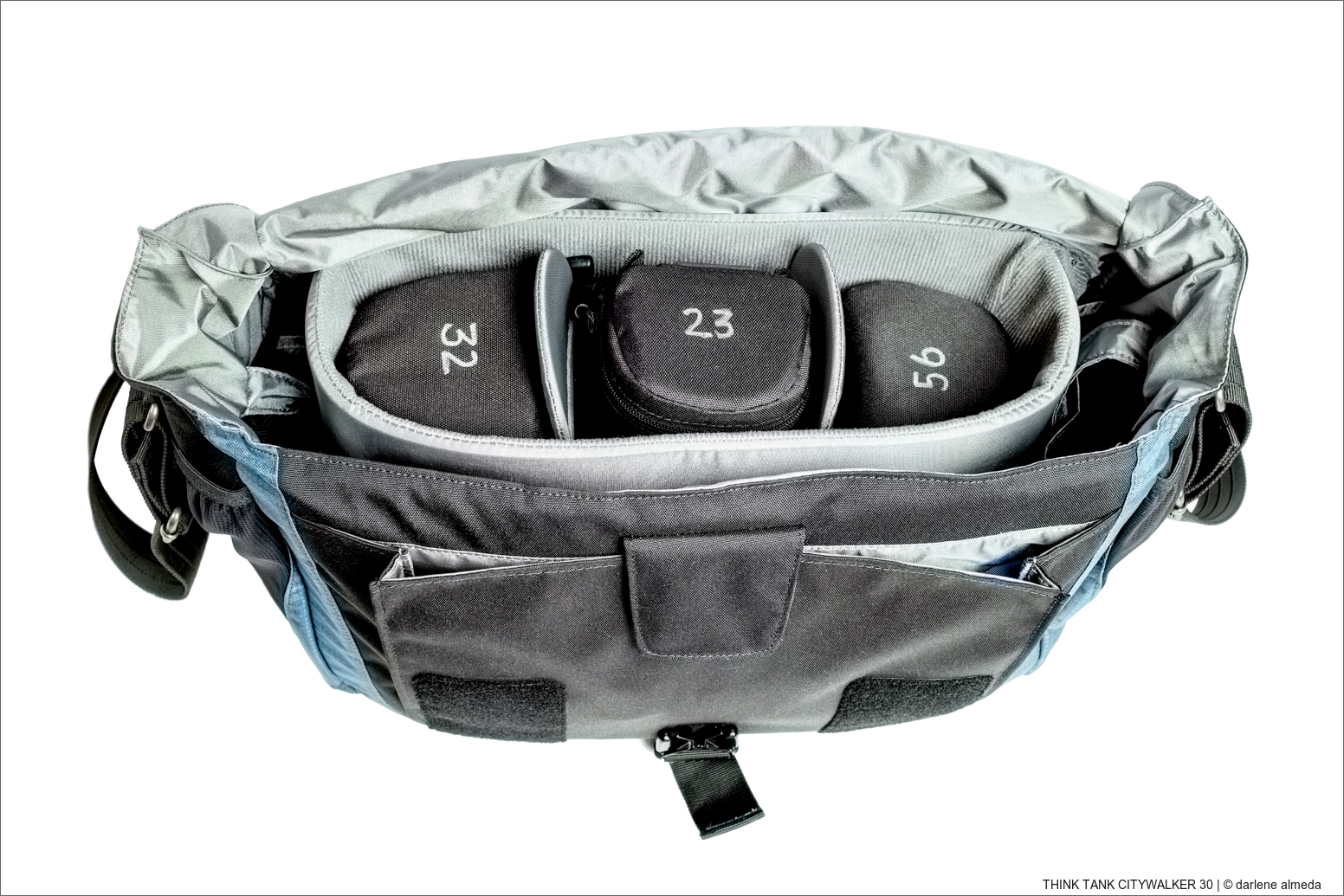A panoramic camera, a close-up filter, and a batch of fake tulips walk into a studio… here’s what happened when I broke all the rules.
it’s about gear
Hands-On with the Cambo 6×12 Film Magazine C-243
A detailed review of the Cambo C-243 6×12 film magazine: build quality, film loading, operation, and why it’s a top pick for panoramic 4×5 shooters.
Worldwide Pinhole Day 2025: Tempus Fugit
A 4×5 pinhole photograph celebrating Worldwide Pinhole Day 2025 — capturing the quiet drift of light, time, and memory in a kitchen bathed in afternoon glow.
A Gobo, a Snoot, and a Sandwich
Learn how I used an optical snoot, a few gobos, and a budget lens to create moody, window-style light for a tomato still life. Sandwiches included.
Fotoman 6×17 Lens Change Part #2: Calibration
Calibrating the Nikkor SW 90mm on a Fotoman 6×17 for hyperfocal focus with field tests, film notes, and image results using 510 Pyro and AGO processor.
Fotoman 6×17 Lens Change Part #1: The Lens Cone
Learn to fit a new lens on a Fotoman 6×17, install a Nikkor 90mm f/4.5, adjust spacing for infinity focus, and replace screws for a secure fit.
Using the ALPA Focusing Bellows with Digital Backs
Discover how the ALPA Focusing Bellows can enhance your photography experience with digital backs, providing a clear view of the LCD screen.
Hasselblad 907x and Tech Camera Digital Plate Rear Covers
Discover alternative protective covers for your Hasselblad 907x 50c II, including options or tech camera ‘V’ back digital plates.
Binocular Viewer Customized for Ebony 4×5 Cameras
A binocular viewer modified for Ebony 4×5 cameras by S.K. Grimes with easy switching between landscape and portrait orientations.
Looking Through Loupes
We delve into the world of loupes, the unsung heroes of precision in photography. From the Toyo 3.6x to the Schneider 8x, and the new Chamonix 5x loupe.
4×5 vs 120 Film for Panoramas: Cost & Convenience Comparison
Discover the advantages of shooting 4×5 film over 120 film for panoramic photography, including cost savings and convenience.
The Art of Pre-Visualization in Landscape Photography
In this article, I share the previsualization technique that guides me to where I need to set up the camera.
Adapting to Change: Shooting 120 Film in Hasselblad A24 Magazines
This article reviews two rolls of 120 film shot in succession in Hasselblad A12 and A24 film magazines with a 501CM camera and CF 135 lens and Vario-Tube.
Pinhole Photography: 4×5 Field Camera Pin-tography
In this article, I share my approach to crafting images with a 4×5 field camera with interchangeable pinholes attached to a dedicated lens board.
Pinhole Photography: Optimal Pinhole Sizes
Creating sharp and captivating images with a pinhole camera begins with understanding the importance of pinhole size.
A Photographer’s Journey: How a Hasselblad Shaped My Career
In the summer of ’85, a chance encounter at KEH Camera Brokers led to the acquisition of a Hasselblad camera that transformed my photography career.
The NONS Instant Back: Bringing Instant Gratification to Your Hasselblad Experience
I’m about to spill the beans on the NONS Instant Back and my beloved Hasselblad 501CM. But before diving into the greatness of instant gratification, let’s take a moment to appreciate the history of instant film and Hasselblad.
Shading and Enhancing: The Matte Box Advantage
I discovered that a matte box, typically used with DSLR and video cameras, can also be an excellent accessory for other camera types, like panoramic and large-format cameras.
Film and Digital with Iconic Hasselblad Cameras
Discover how to balance between film and digital photography using two unique Hasselblad cameras from the V system. Explore the intricate dance between classic and contemporary methods in capturing artistic expression.
Capturing Clarity: A Guide to MTF Charts and Lens Sharpness
Modulation Transfer Function (MTF) is used to describe how well a lens captures and reproduces details. This article explores the factors contributing to a high MTF.
Infrared Photography Part 3: Fujifilm X-E2
Explore my return to infrared photography using the Sigma SD1 Merrill. In Parts 1 & 2, I share my experiences and IR workflow with this unique camera.
From Soap Bubbles to Emotion: How I Create Abstract Macro Photography
I enjoy viewing and creating abstract art. Whether it is paintings or photography, I like it. I have experienced some “I do not get it” from people over the years, and I can understand why.
Shedding Light on Filter Factors: A Guide to Optimizing Exposure in Photography
This article explores filter factors, explaining their function and presenting three distinct methods for calculation.
Pinhole Photography: Perfect Exposure Without Gadgets
A pinhole camera, often called a “camera obscura,” is a lensless camera used for centuries to study light and optics. Today, it is popular in education and art. Photographers craft pinhole cameras from everyday items like cigar boxes and paint cans, or through CNC machining and woodworking. Others opt for ready-made pinholes compatible with existing cameras or those manufactured by others. This timeless device continues to inspire creativity and exploration in the photography world.
Lens Case Recycling: Updating The Labels
Recycle unused lens cases! In this follow-up to *Camera Bag Versatility*, I share how I repurpose cases—like my old Fujifilm 23/2 case—for new gear needs.
4×5 Film Holders: Care & Carry
Learn how a simple pastry brush keeps dust out of film holders—a timeless technique I learned in photography school and still use today for clean, sharp images.
DIY Custom Case for Your Digital Back
I’ve assembled a collection of photography-related items, such as lens cases, equipment bags, and backpacks. While some of these cases are passed on with gear I’ve sold, I’ve retained a specific type of Tamrac lens case due to its durable and lightweight design, featuring a convenient top handle. The centrally located top handle in lens cases proves highly practical, facilitating easy access when reaching into a backpack from above. In this DIY article, I’ll guide you through how I created a custom case for carrying my digital back and backup batteries on location, using readily available materials. Typically, I store my digital back and batteries in a Pelican case when not shooting. Still, I occasionally leave my gear in its bag after a shoot and leave the digital back and batteries in the DIY case, as it offers excellent protection within my camera bag.
From Tool Caddy to Camera Buddy: A DIY Gear Solution on the Go
Turn an old tool caddy into the perfect in-vehicle camera carrier. Quick access, no tipping, and zero setup hassle—your gear deserves this DIY upgrade!
Shooting a Rolleiflex with Studio Flash and Rolleinars
In a digital world lacking true square format, film remains the answer. Discover why square format film cameras still reign for full-resolution, composed square shots.
Camera Bag Versatility
While assembling my Fuji X-Pro2 (XP2) kit, I began looking for a lightweight bag to store it all in. I wanted the bag to carry my lenses in cases and be easy to work out of from the back of a vehicle. I also use the XP2 in the studio, so the bag had to offer something. Would it be possible to find such a versatile bag?
Infrared Photography Part 2: Sigma SD1M
In Part 1 of this discussion, I explained my current foray into digital infrared (IR) photography and used the Sigma SD1M as my camera of choice. My reasons for choosing the SD1M are the user-friendly removal of the IR blocking filter, and the fact that I currently use the SD1M in my color art photography work. I like the Foveon sensor of the SD1M very much and if you want to use a Foveon sensor, you will have to use a Sigma camera.
Infrared Photography Part 1: Sigma SD1M
I first tried infrared (IR) photography back in the mid-1990s with a Nikon F3 camera and lenses and the now discontinued Kodak High-Speed Infrared film (Kodak HIE). It was more difficult to shoot IR film when compared to my recent tryout with IR digital because: (1) the film had to be loaded and unloaded in total darkness which made reloading out in the field difficult and (2), you had to wait for the film to be processed to see the results.































